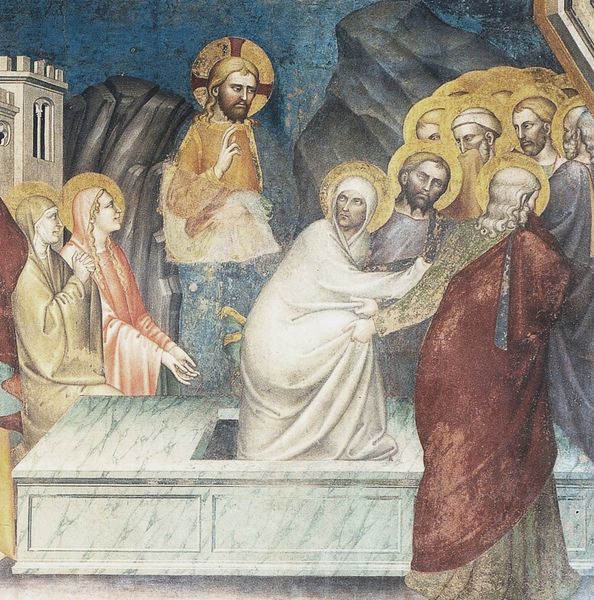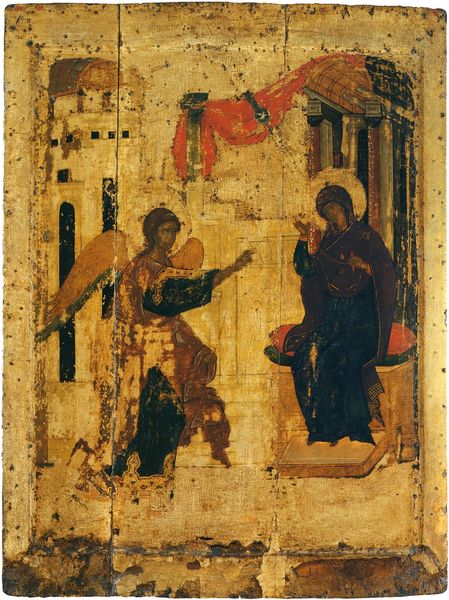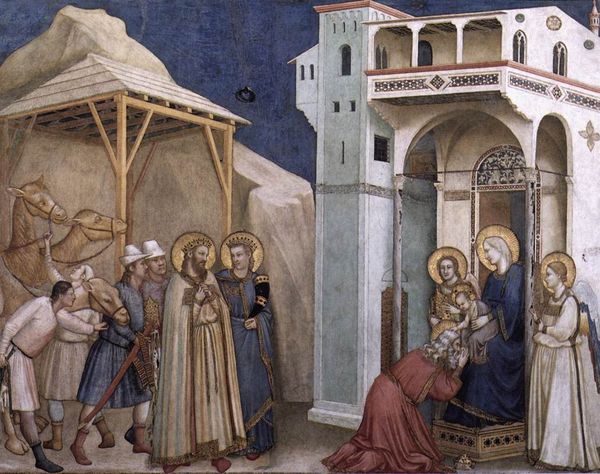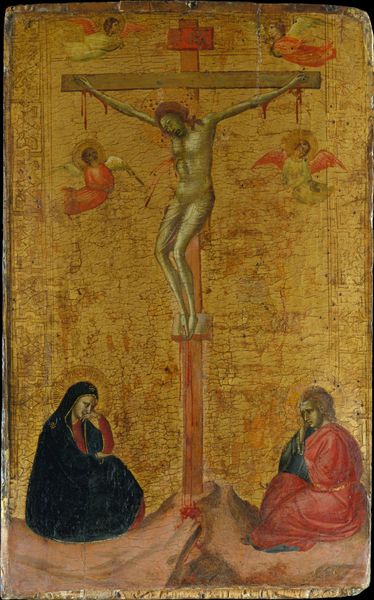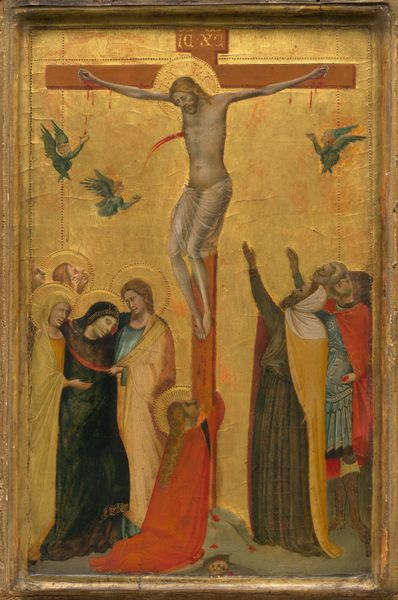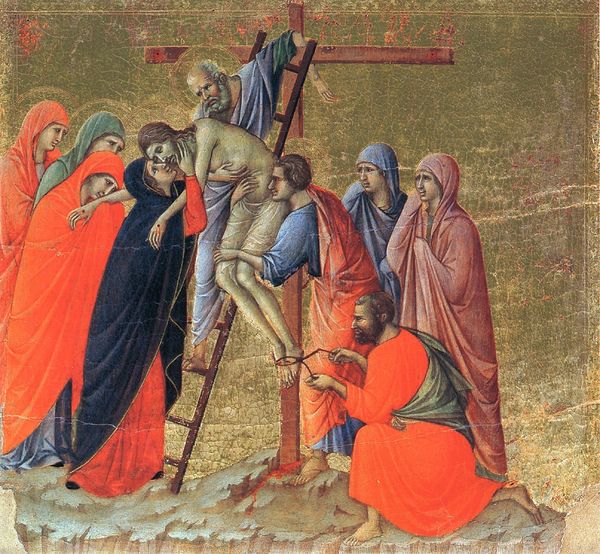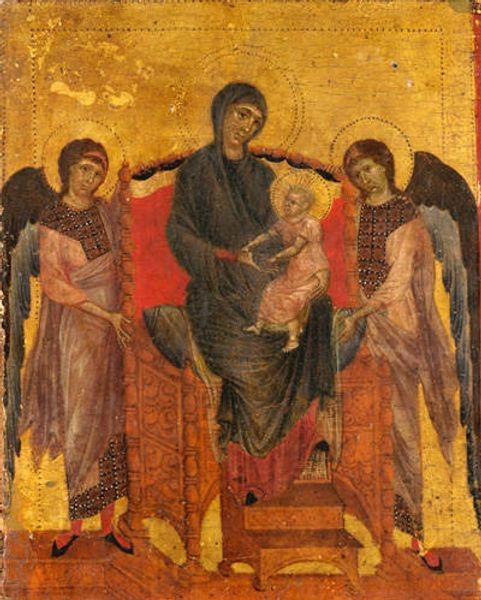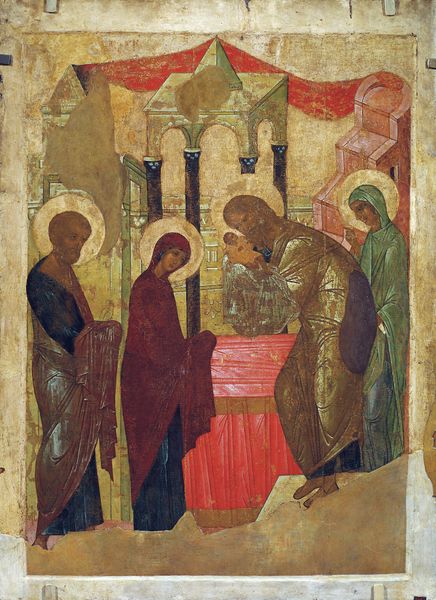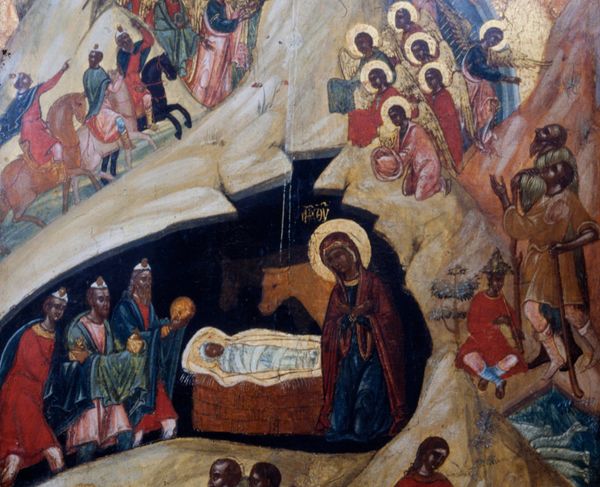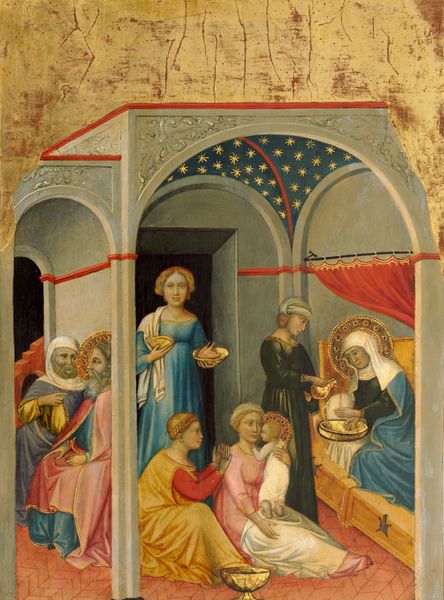
tempera, painting
#
medieval
#
tempera
#
painting
#
painted
#
figuration
#
oil painting
#
history-painting
Dimensions: height 18.5 cm, width 18 cm
Copyright: Rijks Museum: Open Domain
Curator: Just look at it: chaos organized by grief. Editor: Indeed. What we have before us is a late 13th-century tempera painting, titled "The Deposition and the Entombment," by an anonymous artist. Two key moments are captured in one panel. The deposition, when Christ's body is taken down from the cross, blends almost seamlessly into the entombment. Curator: The figures all feel like they are trapped in one anguished gesture. Even with that bright gold background, the painting emits a visceral solemnity, almost heavy with a sorrow that permeates the whole scene. Look at the ladders…they look so rickety! Everything feels precarious, and like, barely holding. Editor: Notice the iconographic shorthand: halos identify sanctity, gestures indicate emotion and narrative significance. See how Christ's lifeless body bridges the gap between the cross and the tomb. It represents more than one man's physical burden, it embodies shared agony and cultural memory. Curator: It’s also about the way the sacred narratives become a collection of shapes: an almost flattened field of bodies under that geometric cross, the circles of halos... Did medieval viewers have that sense of simultaneous distance and closeness? I find myself fluctuating between the graphic power and the overwhelming empathy for the group. Editor: Such compressed emotional space has precedent. One must recall earlier Byzantine depictions of similar themes. This painter synthesizes iconic forms while expressing a localized gothic sensibility. Do you perceive any elements particular to the image? Curator: It's that feeling that I'm looking at grief as material—as in, pigment and gilt laid on panel, yet alive as an emotional touchstone centuries later. Like we’re looking at an ache made visible. Editor: A striking sentiment with which to depart, thank you. An evocative summary of this anonymous master's legacy, uniting material and memory so compellingly.
Comments
rijksmuseum about 2 years ago
⋮
These two panels are probably fragments from a larger ensemble devoted to the Passion of Christ. The artist followed established conventions for depicting grief and sorrow through gesture. This approach was characteristic of the stiff, rather formulaic style derived from Greek and Byzantine models that was prevalent in 13th-century Italy.
Join the conversation
Join millions of artists and users on Artera today and experience the ultimate creative platform.

